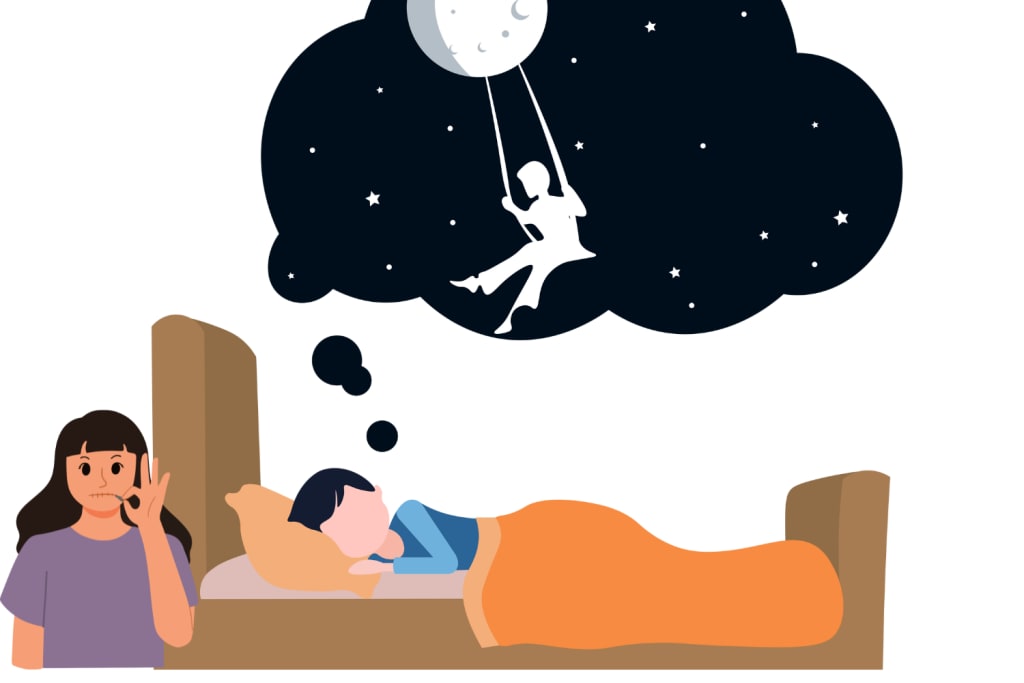Unveiling the Mysteries of Lucid Dreaming: Harnessing the Power of Conscious Dreaming
Delve into the fascinating realm of lucid dreaming, where individuals are aware they are dreaming and can control their dreams.

In the realm of sleep, a remarkable phenomenon known as lucid dreaming allows individuals to become fully aware of their dreams. This awe-inspiring state of consciousness offers a playground for the imagination, where dreamers can actively shape their dreamscapes and experiences. This article delves into the captivating world of lucid dreaming, exploring the science behind this extraordinary phenomenon. We uncover the potential benefits of lucid dreaming for creativity, problem-solving, and personal growth. Additionally, we provide practical techniques and advice to help individuals unlock the incredible potential of lucid dreaming.
The Science of Lucid Dreaming :
Lucid dreaming occurs during the Rapid Eye Movement (REM) phase of sleep, a stage when the brain exhibits heightened activity and vivid dreaming. In a lucid dream, the prefrontal cortex, responsible for self-awareness and decision-making, becomes active despite the rest of the brain being in a sleep state. This allows dreamers to recognize they are in a dream and gain control over their actions and surroundings.
Research conducted at institutions like Stanford University has used brain imaging techniques to validate the existence of lucid dreaming and identify specific neural patterns associated with the state of lucidity. This scientific understanding of lucid dreaming highlights its immense potential for exploration and personal development.
The Benefits of Lucid Dreaming :
a. Creativity and Problem-Solving: Lucid dreaming provides a fertile ground for creativity and problem-solving. In a lucid dream, individuals can explore unconventional scenarios and ideas without the constraints of reality. Artists, writers, and innovators often use lucid dreaming as a source of inspiration, as it allows them to visualize and experiment with their creative visions.
b. Confronting Fears and Nightmares: Lucid dreaming empowers individuals to confront and transform recurring nightmares or fears. By recognizing they are dreaming, dreamers can change the dream's narrative into a positive or empowering experience. This therapeutic aspect of lucid dreaming can help reduce anxiety and improve overall sleep quality.
c. Skill Enhancement: Studies suggest that practicing skills in lucid dreams can have tangible benefits in waking life. Athletes, for example, can rehearse complex movements and strategies within their dreams, leading to improvements in their real-world performance.
d. Personal Growth and Self-Discovery: Lucid dreaming allows for introspection and self-discovery. Engaging in conversations with dream characters or delving into symbolic dreamscapes can provide valuable insights into the dreamer's subconscious thoughts and emotions.
Techniques for Inducing Lucid Dreams:
a. Reality Checks: Develop a habit of performing reality checks throughout the day. For example, try to push your finger through the palm of your hand, and question whether you are awake or dreaming. Over time, this habit will transfer into your dreams, allowing you to recognize when you are in a dream state.
b. Keep a Dream Journal: Maintain a dream journal by your bedside and record your dreams immediately upon waking. This practice enhances dream recall and helps identify recurring dream themes or patterns, which can trigger lucidity when encountered again.
c. Mnemonic Induction of Lucid Dreams (MILD): Before falling asleep, repeat affirmations like "I will realize I'm dreaming" to program your subconscious mind for lucidity. Combine this with visualization techniques, imagining yourself becoming lucid within a dream scenario.
d. Wake-Back-to-Bed (WBTB): Set an alarm to wake up during the latter part of your sleep cycle, when REM sleep is more predominant. Stay awake for a short period and then return to bed to have a lucid dream.
Study on Brain Activity During Lucid Dreaming:
In a groundbreaking study published in 2012 in the journal "Nature Neuroscience," researchers from the Max Planck Institute of Psychiatry used functional magnetic resonance imaging (fMRI) to examine brain activity during lucid dreaming. The study found that the prefrontal cortex showed increased activity during lucid dreaming, indicating heightened self-awareness and cognitive control even in a dream state. This study provided significant evidence supporting the existence of lucid dreaming and its potential for further exploration.
The Therapeutic Benefits of Lucid Dreaming:
A study published in the "Journal of Clinical Sleep Medicine" in 2006 investigated the therapeutic benefits of lucid dreaming for individuals experiencing recurring nightmares. The research team, led by Dr. Stephen LaBerge, found that participants who underwent lucid dream therapy reported a significant reduction in nightmare frequency and distress. Lucid dreaming allowed them to actively confront and transform the content of their nightmares, leading to improved sleep and overall well-being.
Skill Enhancement through Lucid Dreaming:
In 2014, a study published in the "International Journal of Dream Research" explored the relationship between lucid dreaming and skill enhancement. Researchers investigated whether practicing physical activities in lucid dreams could improve real-world performance. The study found that individuals who rehearsed specific movements and techniques in their lucid dreams demonstrated tangible improvements in their corresponding waking life skills.
Lucid Dreaming and Creativity:
A study conducted at the University of Lincoln, UK, and published in the "British Journal of Psychology" in 2019 examined the relationship between lucid dreaming and creativity. The researchers surveyed participants about their lucid dreaming frequency and creative achievements. The findings revealed a positive correlation between lucid dreaming and creative thinking, suggesting that engaging in lucid dreams may stimulate imaginative processes and inspire creative endeavors.
Lucid Dreaming in Non-REM Sleep:
In 2020, a study published in the journal "Dreaming" challenged the prevailing notion that lucid dreaming primarily occurs during REM sleep. The research, led by Dr. Daniel Erlacher, explored the frequency of lucid dreams during both REM and non-REM sleep phases. The findings indicated that lucid dreaming can occur during various sleep stages, shedding light on the complexity of lucid dream experiences.
These research findings contribute to a deeper understanding of lucid dreaming and its potential applications. Scientists continue to explore the fascinating realm of lucid dreaming, revealing new insights into its mechanisms, benefits, and practical techniques for inducing and maintaining lucidity. As the scientific community delves further into this mysterious domain, more doors are opened to uncover the vast potential of conscious dreaming for personal growth and cognitive exploration.
Lucid dreaming opens a doorway to an enthralling world of self-awareness and boundless possibilities. As we unravel the science behind lucid dreaming and explore its benefits for creativity, problem-solving, and personal growth, we discover that this realm of consciousness can be harnessed to enrich our waking lives. With patience and practice, anyone can embark on this fascinating journey of conscious dreaming.






Comments
There are no comments for this story
Be the first to respond and start the conversation.